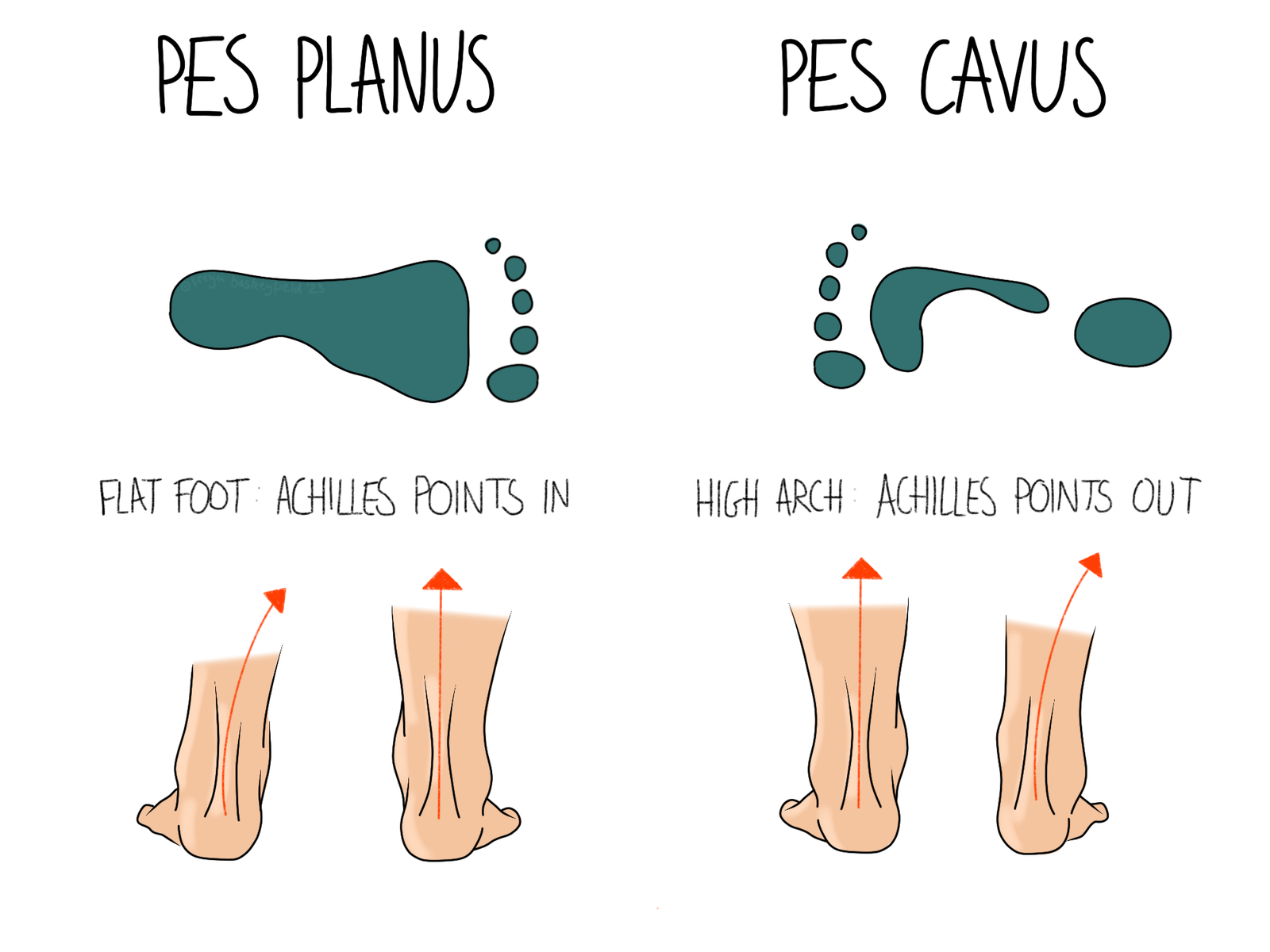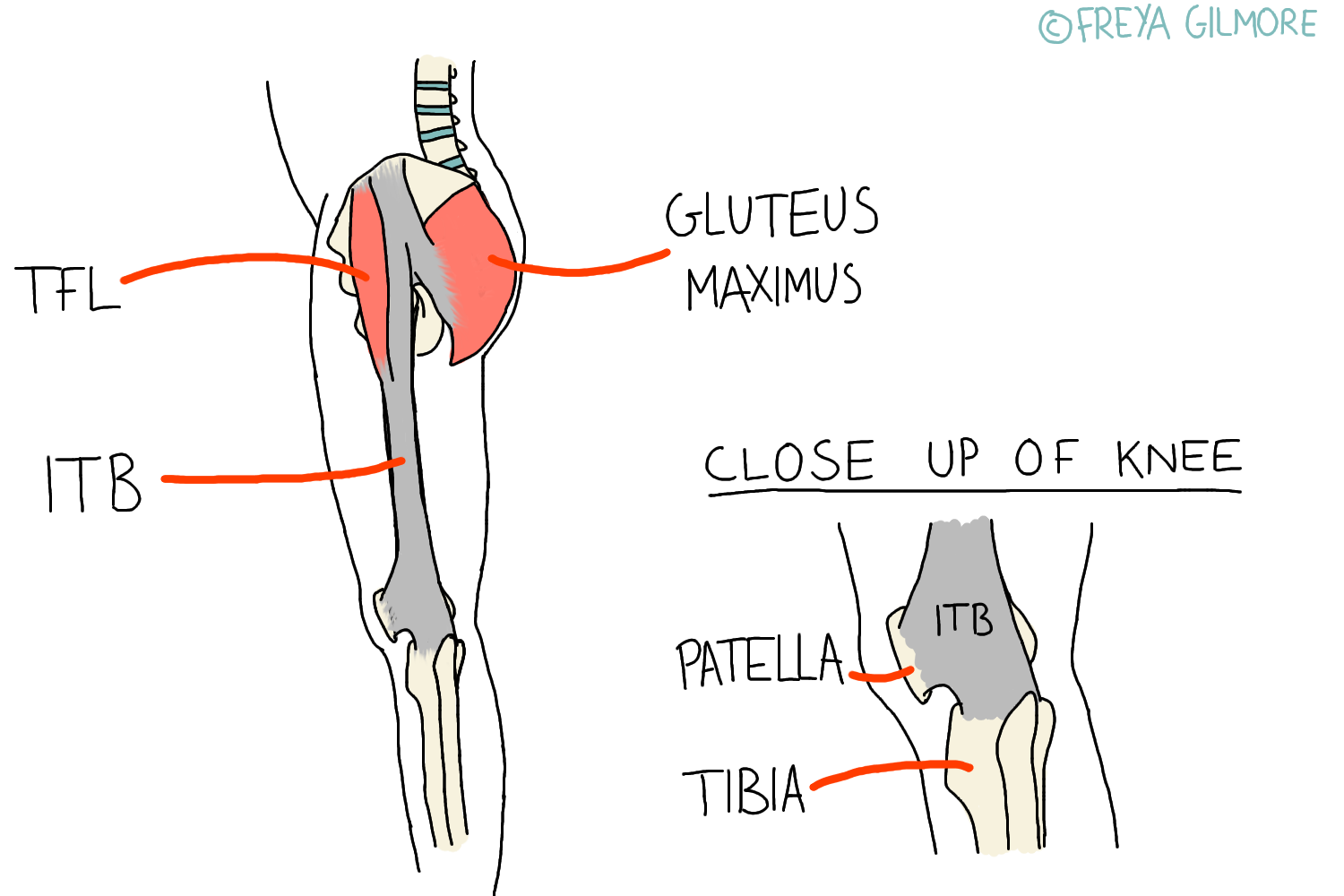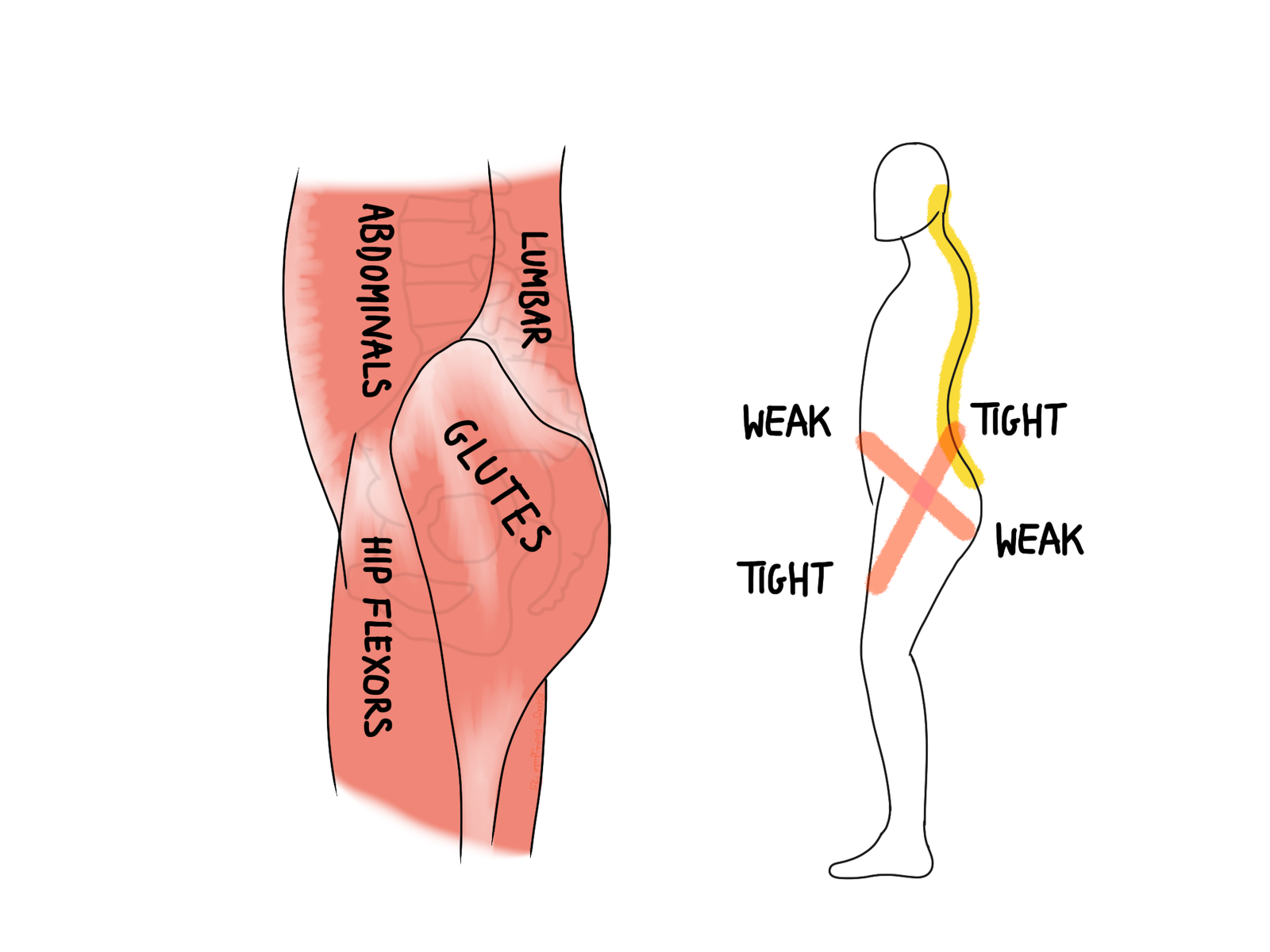The IT band is a band of tissue that runs down the side of the…

High or Low Arches
The official names for high and low arches are pes cavus and pes planus respectively. The image below shows the basic impact of these changes on where the foot contacts the ground. It also shows the impact on the foot and ankle: impacts that must be absorbed by the body at some point.
 Why do we have Arches?
Why do we have Arches?
The arches of the foot are meant to move. They work as shock absorbers and help somewhat to spring the foot back off the ground when we walk. There are 26 bones in each foot, and many more joints. Each of those joints has a cartilage surface on either side that needs to keep moving to stay healthy. Foot joints can develop osteoarthritis if their movement is sub-optimal, with can be associated with bunions and trapped nerves within the foot, and can be a cause of flat feet themselves.
We’re actually born with flat feet, and it takes around three years for the first hint of the medial arch to show. This goes a way to show why toddler shoes need to be so different to adult shoes. “Adult” arches are present by our 10th birthday. If the arch does medial foot still makes contact with the floor after this point, it may be due to hypermobility, a neurological condition causing increased tone, or unusual ankle anatomy.
Arch height can also change later in life. Diabetes and conditions like Charcot Marie Tooth disease can affect the nerves of the feet. This makes the muscles behave differently and alters the arch. High arches developing later in life can be a sign of an issue with the central nervous system.
Impact of High or Low Arches
When the arches are high, shock absorption is significantly reduced. This means there’s more of an impact when the foot hits the floor, so pain around the ball of the foot is common. The ability to adapt to uneven surfaces is diminished, so trips and falls are more likely. The changes in the foot and ankle demand more of the joints above, so ankle, knee, and hip pain often follow.
In contrast, when the arches are low, they cause the lower leg to tip inward at the knee. This can overstress the ligaments on the inner edge of the knee, making sprains more likely. It also stresses the ligaments on the outer side of the ankle, which are the ligaments most commonly sprained when you twist your ankle. It’s not uncommon to suffer with cramping and pain around the arch.
Osteopathy for High or Low Arches
Unusual arches may be due to a structural change, like an unusual shaped ankle bone. Although we can’t alter the shape of the bone, we can help the body adapt to it. This help is often most important when the change has happened in adulthood, for example if you suffered a fracture that healed imperfectly. Exercises similar to those that rehabilitate after a sprain or fracture are often appropriate here.
We also screen for conditions that are out of our remit. We may refer back to your GP if it does look like there is undiagnosed neurological involvement.
The treatment plan might involve strengthening muscles to support the overstretched ligaments. In some cases it might be possible to counter some of the changes to joints by improving their mobility, or working on joints nearby. In more severe cases, we might advise you to wear a brace or support. For most people mobility is preferable to bracing so please don’t self-prescribe one.
Click here to make an appointment for your high or low arches in Camberley



